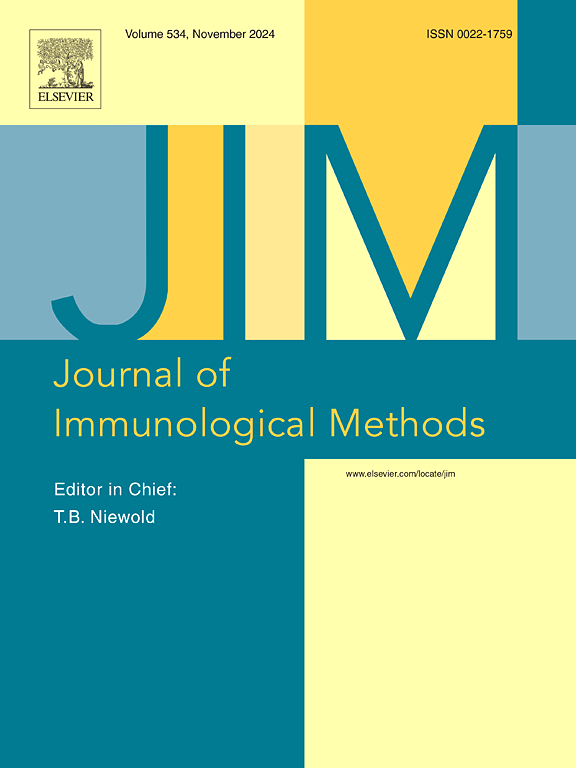嗜碱性粒细胞活化试验;用户手册。
IF 1.6
4区 医学
Q4 BIOCHEMICAL RESEARCH METHODS
引用次数: 0
摘要
由嗜碱性细胞和肥大细胞协调的即时过敏反应是严重过敏反应的关键。基于流式细胞术的嗜碱性粒细胞激活试验(BAT)是以CD63和CD203c为终点检测过敏反应的临床重要试验。该测试测量对过敏原的浓度依赖性反应,提供患者过敏的功能读数。BAT目前在美国和其他几个国家用于临床诊断和监测过敏,最常见的是针对食物过敏原。本文详细介绍了通过CAP、CLIA、NYS和CLSI参考现有法规/建议的分析和临床分析验证,包括准确性、精密度、线性度、可报告范围、参考范围、分析敏感性和特异性、分析前考虑、分析在诊断或监测中的效用以及结果的解释;还有化验的局限性。BAT在评估患者对食物挑战和治疗(如口服免疫治疗、舌下免疫治疗或omalizumab)的适应性方面起着至关重要的作用,并有助于预测治疗结果。我们进一步回顾了目前在推进该测试方面的研究,重点是改进其临床应用。为了加强监管和全面的临床验证,确保BAT无缝整合到不同的临床环境中,需要继续努力。本文章由计算机程序翻译,如有差异,请以英文原文为准。
Basophil activation test; User's manual
Immediate allergic responses, orchestrated by basophils and mast cells, are pivotal in severe allergic reactions. The flow cytometry-based Basophil Activation Test (BAT) is a clinically important assay for testing allergic reactions using CD63 and CD203c as endpoints. The test measures the concentration dependent response to the allergens providing a functional readout of the patients' allergies. BAT is presently in clinical use within the Unites States as well as several other countries for the diagnosis and monitoring of allergies, most commonly against food allergens. This article details assay validation, both analytical and clinical with reference to existing regulations/recommendations through CAP, CLIA, NYS and CLSI on issues including accuracy, precision, linearity, reportable range, reference range, analytical sensitivity & specificity, pre-analytical considerations, the utility of the assay in diagnosis or monitoring and interpretation of the results; and the assay's limitations.
The BAT plays a crucial role in assessing patient suitability for food challenges and therapies such as oral immunotherapy, sublingual immunotherapy or omalizumab and can aid in predicting treatment outcomes. We further review the current research on advancing the test, focused on improvements in its clinical utility. Continuous efforts are warranted for enhanced regulatory oversight and comprehensive clinical validation, ensuring BAT's seamless integration into diverse clinical settings.
求助全文
通过发布文献求助,成功后即可免费获取论文全文。
去求助
来源期刊
CiteScore
4.10
自引率
0.00%
发文量
120
审稿时长
3 months
期刊介绍:
The Journal of Immunological Methods is devoted to covering techniques for: (1) Quantitating and detecting antibodies and/or antigens. (2) Purifying immunoglobulins, lymphokines and other molecules of the immune system. (3) Isolating antigens and other substances important in immunological processes. (4) Labelling antigens and antibodies. (5) Localizing antigens and/or antibodies in tissues and cells. (6) Detecting, and fractionating immunocompetent cells. (7) Assaying for cellular immunity. (8) Documenting cell-cell interactions. (9) Initiating immunity and unresponsiveness. (10) Transplanting tissues. (11) Studying items closely related to immunity such as complement, reticuloendothelial system and others. (12) Molecular techniques for studying immune cells and their receptors. (13) Imaging of the immune system. (14) Methods for production or their fragments in eukaryotic and prokaryotic cells.
In addition the journal will publish articles on novel methods for analysing the organization, structure and expression of genes for immunologically important molecules such as immunoglobulins, T cell receptors and accessory molecules involved in antigen recognition, processing and presentation. Submitted full length manuscripts should describe new methods of broad applicability to immunology and not simply the application of an established method to a particular substance - although papers describing such applications may be considered for publication as a short Technical Note. Review articles will also be published by the Journal of Immunological Methods. In general these manuscripts are by solicitation however anyone interested in submitting a review can contact the Reviews Editor and provide an outline of the proposed review.

 求助内容:
求助内容: 应助结果提醒方式:
应助结果提醒方式:


